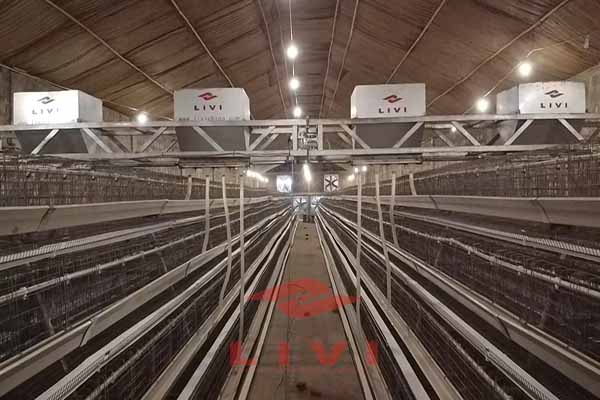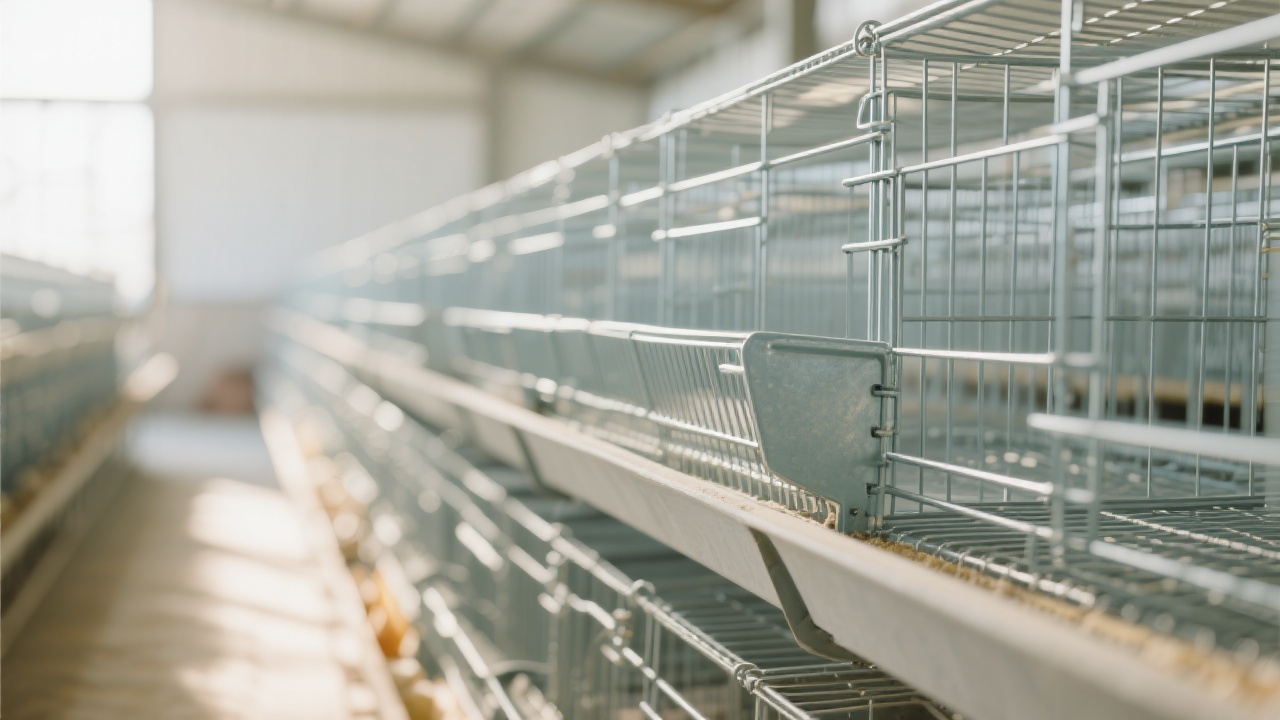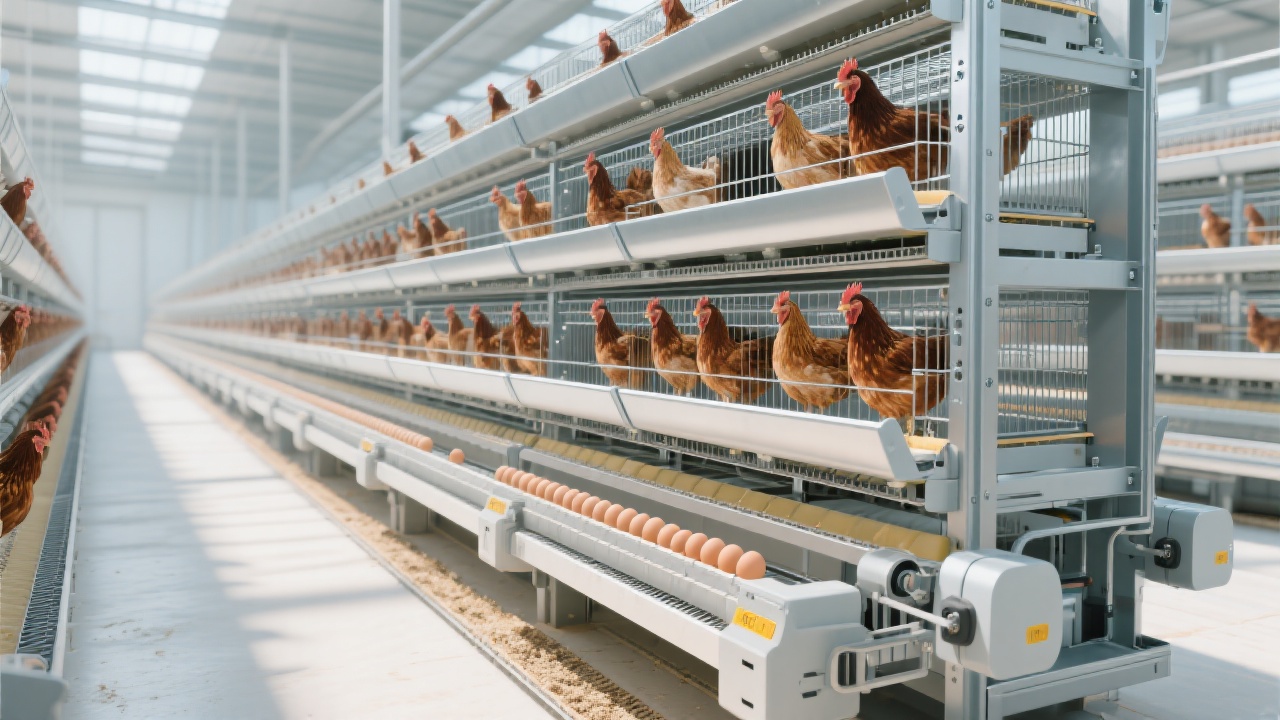Critical Challenges of Ventilation Systems in High Temperature and Humidity Environments and Health Solutions for Laying Hens
2025-09-01
Zhengzhou Livi Machinery Manufacturing Co., Ltd.
Industry Research
This article provides an in-depth analysis of the critical challenges faced by ventilation systems in high temperature and humidity environments and their impact on the health of laying hens. It highlights the technical advantages of Zhengzhou Livi Machinery's high-efficiency H-type tiered laying hen cages in ventilation design. Focusing on the synergistic effects of natural wind pressure and mechanical ventilation, the article explores common issues such as airflow dead zones and ammonia accumulation, proposing scientifically optimized ventilation solutions. Practical case studies demonstrate how these approaches improve hen health and production efficiency, enabling comprehensive optimization of the poultry farming environment.

Critical Ventilation Challenges and Solutions for Laying Hens in High Temperature and Humidity Environments
Maintaining optimal ventilation in poultry farms under high temperature and humidity is vital to safeguard laying hens' health and sustain production efficiency. This article examines the core ventilation challenges inherent in such environments and presents actionable strategies, highlighting the advanced H-shaped tier design of Zhengzhou Livi Machinery’s laying hen cages that offers significant improvements in airflow management.
Understanding Ventilation’s Role in Laying Hen Health
Effective ventilation is the cornerstone of a healthy poultry environment. It serves to:
- Regulate temperature and humidity, preventing heat stress that can reduce egg production by up to 20% during peak summer months.
- Remove harmful gases like ammonia, which at concentrations above 25 ppm can impair respiratory function and suppress immune response.
- Support natural air circulation to reduce pathogen buildup and moisture accumulation on litter and cages.
Ventilation Challenges in High Temperature and High Humidity Settings
Poultry houses in regions with hot, humid climates face unique difficulties:
| Issue |
Implication |
Impact on Laying Hens |
| Reduced Natural Airflow |
Stagnant zones or air dead spots |
Increased heat accumulation, higher ammonia concentration |
| High Ambient Humidity (Above 70%) |
Moisture saturation inside poultry house |
Wet litter, bacterial growth, respiratory diseases |
| Inadequate Mechanical Ventilation |
Insufficient forced air circulation |
Failure to remove hot, moist air effectively |
Synergizing Natural Wind Pressure and Mechanical Ventilation
Optimizing airflow by integrating natural wind pressure with mechanical systems creates continuous air movement, reducing stagnant zones. Natural wind pressure, harnessed through strategically placed ventilation openings, can assist mechanical ventilation fans to enhance exchange of air with less energy consumption.
Practical recommendations include:
- Position inlet vents to face prevailing winds for maximum natural airflow assistance.
- Use variable speed mechanical fans that adjust based on real-time temperature and humidity sensors.
- Ensure exhaust fans are placed to promote cross ventilation, facilitating full air exchange inside the henhouse.

Tackling Airflow Dead Zones and Ammonia Buildup: Effective Solutions
Airflow dead zones, where ventilation is minimal, are hotspots for ammonia accumulation and moisture retention. To mitigate these issues:
- Install airflow deflectors or adjustable louvers inside the poultry house to redirect airflow into stagnant corners.
- Regularly monitor ammonia levels with handheld sensors, aiming to keep concentrations below 10 ppm to maintain optimal hen welfare.
- Elevate cage design to enhance air passage beneath and around birds.
Zhengzhou Livi Machinery’s H-Shaped Layered Cage: A Technological Breakthrough
The innovative H-shaped tiered laying hen cage developed by Zhengzhou Livi Machinery addresses ventilation challenges through a structurally open design that facilitates superior air circulation. Key features include:
- Multi-level airflow channels integrated into the cage frame enabling uniform air distribution.
- Optimized spacing between tiers to prevent airflow obstruction, reducing heat and moisture retention.
- Durable materials with corrosion resistance to withstand high humidity environments.
- with A type layer chicken cages
Field applications demonstrate a 15-20% reduction in ambient cage temperature and a 30% drop in ammonia levels compared to traditional cage systems, leading to improved laying rates and overall flock health.

Practical Steps for Farmers to Optimize Ventilation Now
Implementing incremental improvements can yield substantial benefits:
- Conduct airflow audits using smoke tests or digital anemometers to identify dead zones.
- Adjust vent and fan settings seasonally to balance cooling needs with humidity control.
- Consider upgrading to Livi’s H-shaped cage systems, as they integrate ventilation optimization into the core infrastructure.
- Train staff regularly on ventilation management and environmental monitoring.

We Invite Your Engagement
How have you managed ventilation challenges in your poultry operation? Share your experience or questions in the comments below to foster a knowledge-sharing community. Staying informed and proactive will protect your flock and boost productivity.





